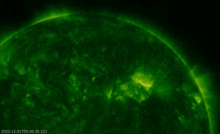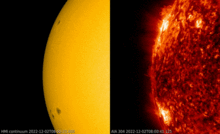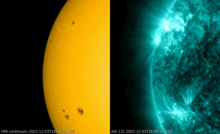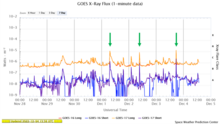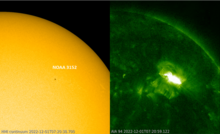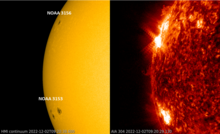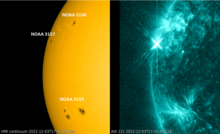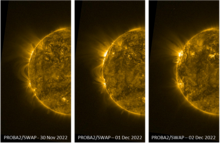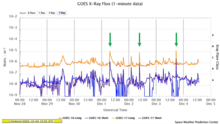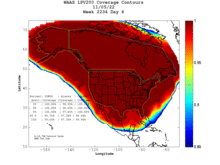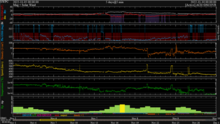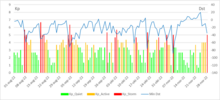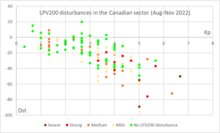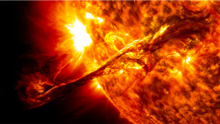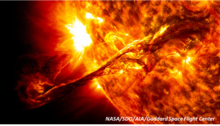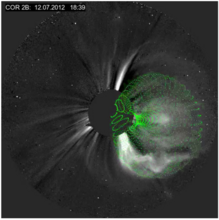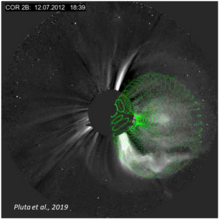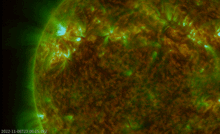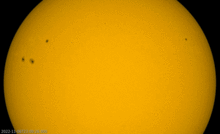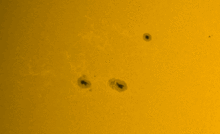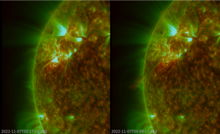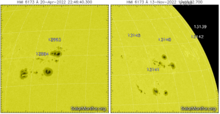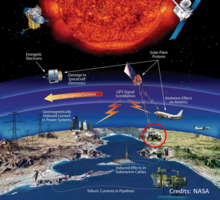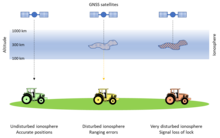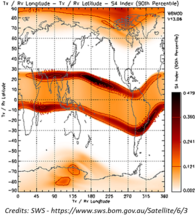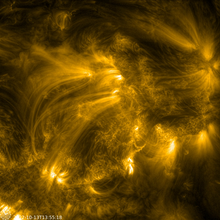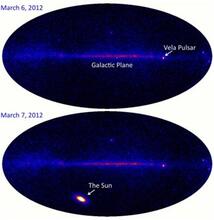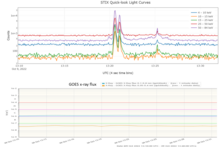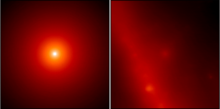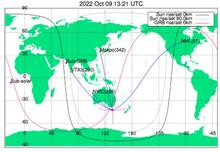news
Submitted on 2022-12-06
Last week's solar flare activity was characterized by a number of interesting events.
Submitted on 2022-11-29
A transient in the solar wind impacted the earth environment on 7 November. Though it resulted only in a brief minor geomagnetic storm, its effects were clearly felt in some GNSS technologies, especially over Canada and Scandinavia.
Submitted on 2022-11-23
JSWSC has opened a new Topical Issue "Solar Sources of Space Weather".
Submitted on 2022-11-23
JSWSC has opened a new Topical Issue "CMEs, ICMEs, SEPs: Observational, Modelling, and Forecasting Advances".
Submitted on 2022-11-17
Solar Orbiter has spotted a ‘tube’ of cooler atmospheric gases snaking its way through the Sun’s magnetic field. The observation provides an intriguing new addition to the zoo of features revealed by the ESA-led Solar Orbiter mission, especially since the snake was a precursor to a much larger eruption.
Submitted on 2022-11-15
Two relatively large sunspot groups produced a number of M-class flares, the largest of which was an M5.2 early on 7 November.
Submitted on 2022-11-08
A small but important sector that is also affected by disturbed space weather is farming and agriculture.
Submitted on 2022-11-01
JSWSC has opened a new Topical Issue "Space Climate: Long-term effects of solar variability on the Earth's environment".
Submitted on 2022-10-27
The ESA-led Solar Orbiter mission has experienced its second close encounter with the Sun. It is delivering more stunning data, and at higher resolution than ever before!
Submitted on 2022-10-25
A strong gamma ray burst affected the Very Low Frequency (VLF) radio communications on 9 October.
Pages
Zircon - This is a contributing Drupal Theme
Design by
WeebPal.

